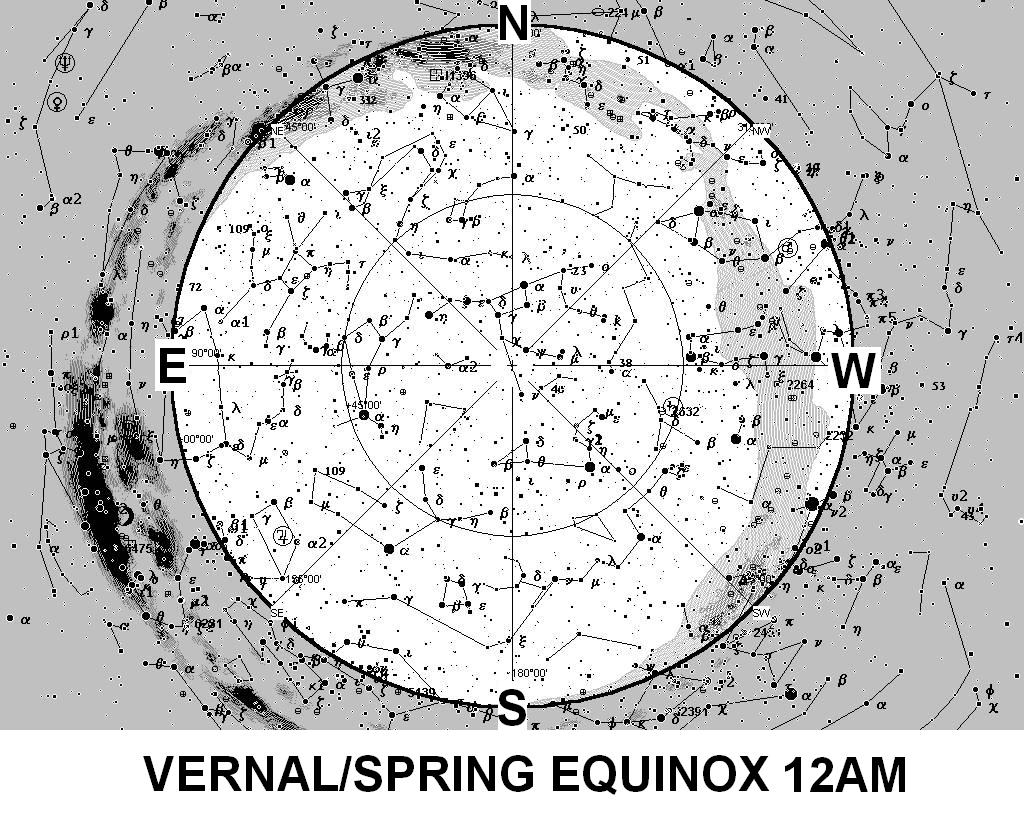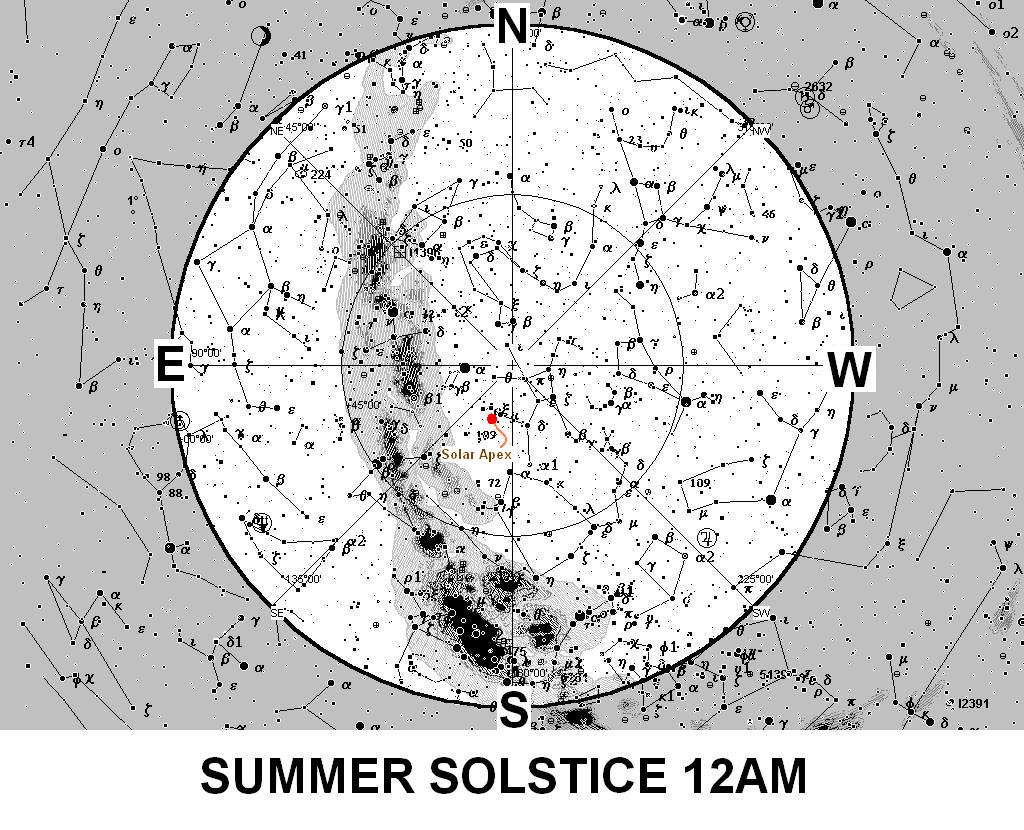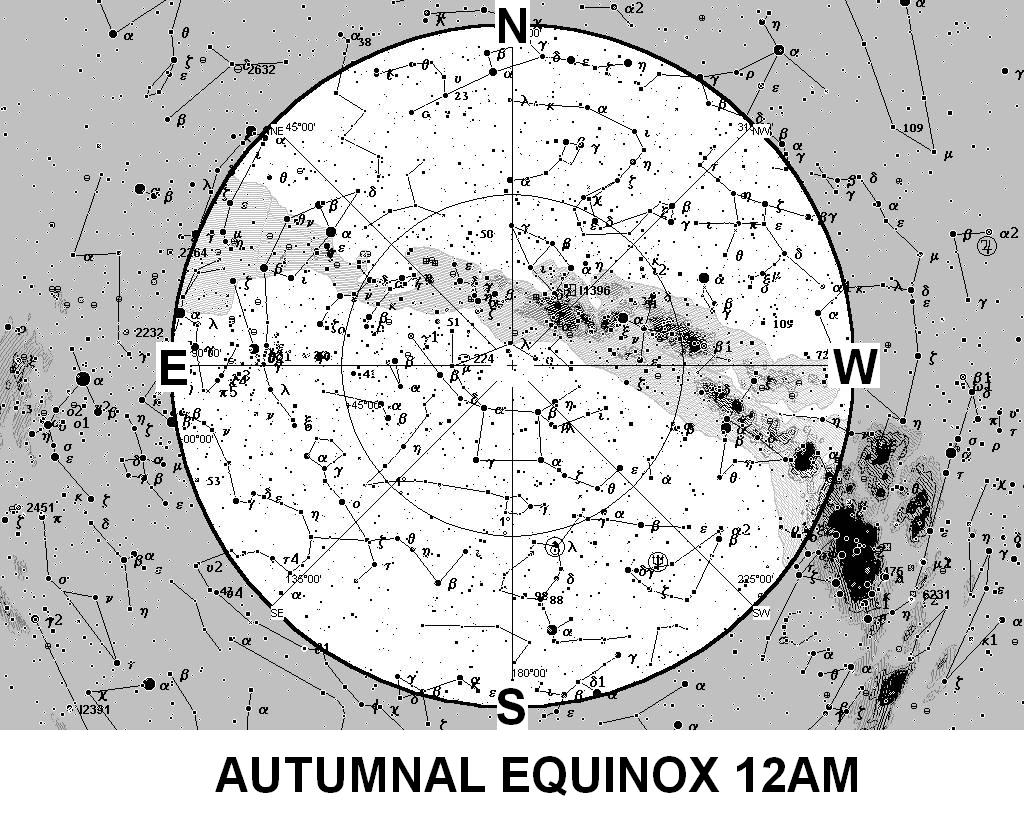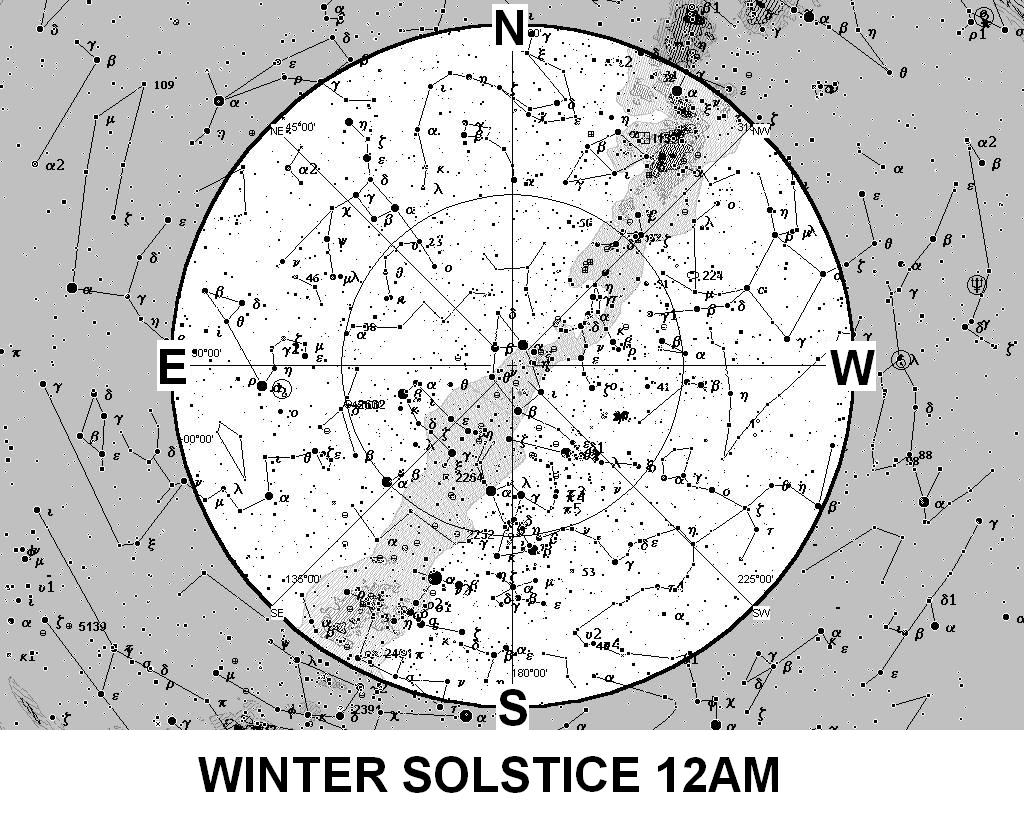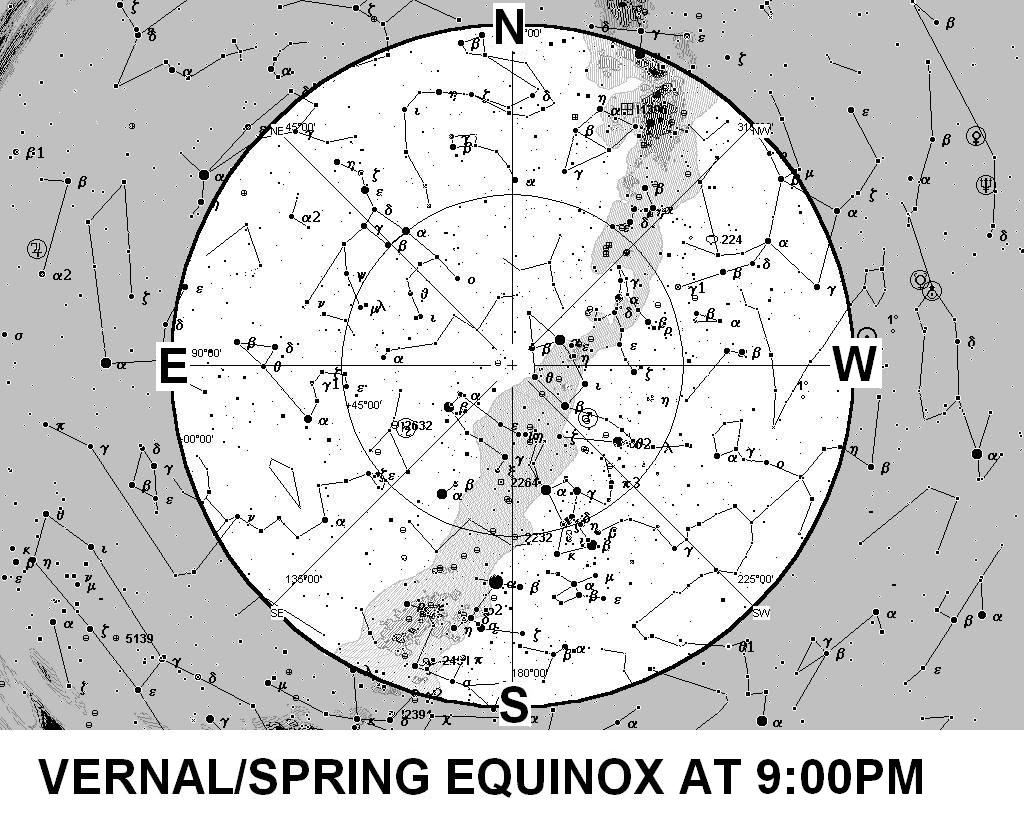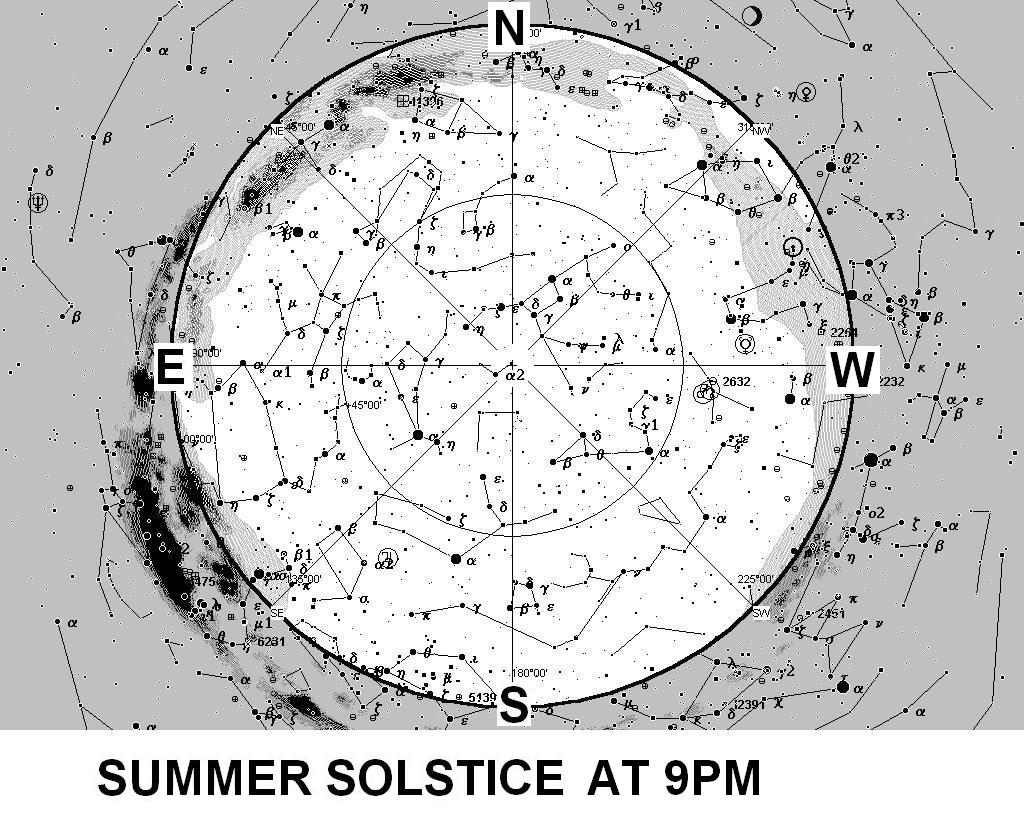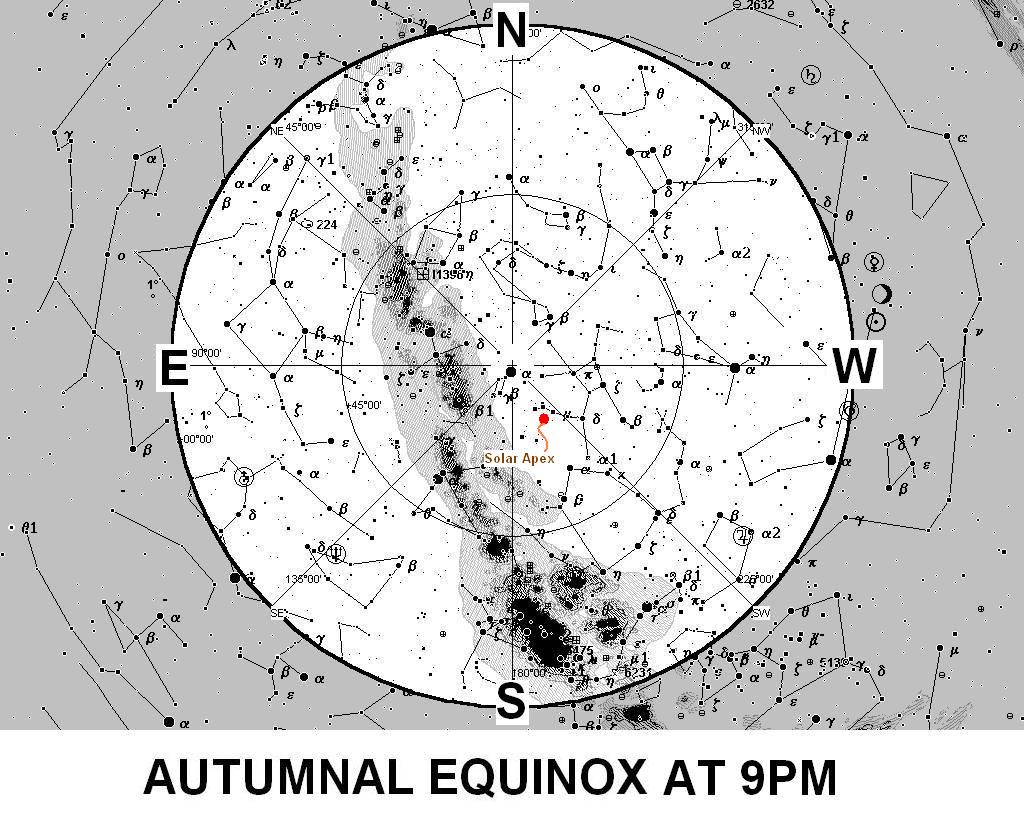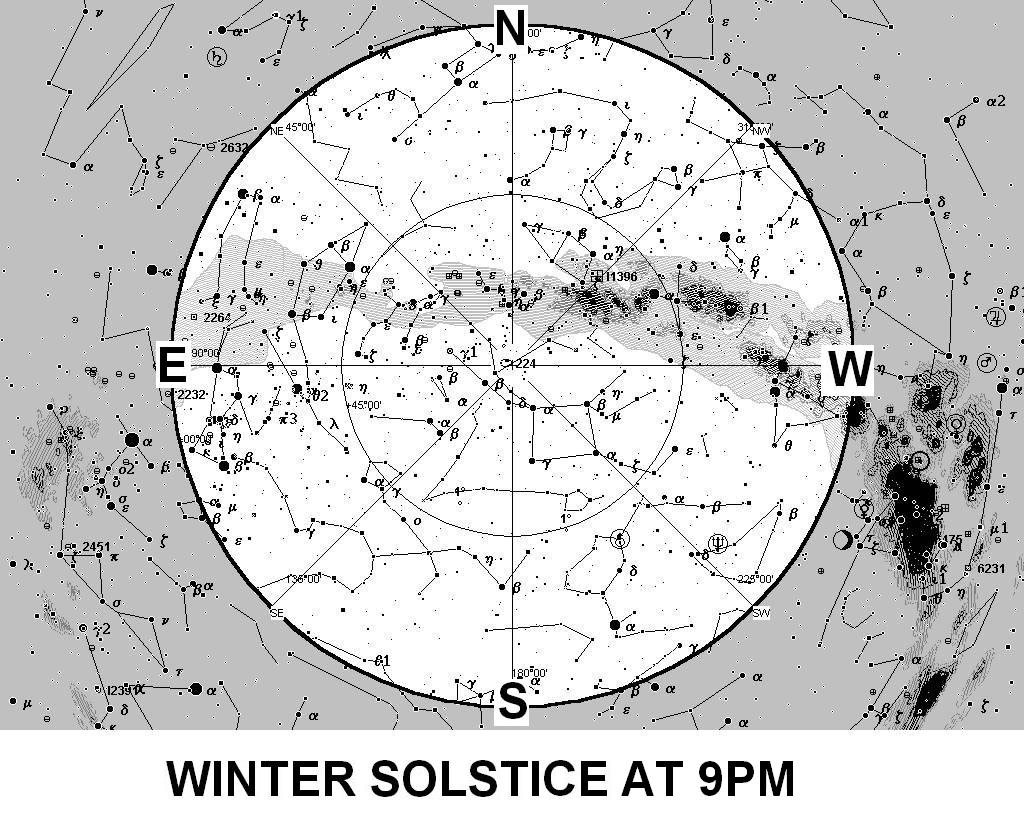Understanding what the plane of the Milky Way Galaxy looks like at various times of the year
A beginning point for understanding the Milky Way Galaxy is to know what parts of the galaxy are seen throughout the year as the Earth completes one orbit of the Sun. This understanding requires gaining an appreciation of the tilt of the Earth's orbit (the plane of the ecliptic of the Solar System) with respect to the galactic plane at the equinoxes and the solstices. The tilt of the ecliptic plane with respect to the galactic plane is extreme - about 62 1/2 degrees.
|
Another consequence of the Earth's orbit relative to the galactic plane is that amateurs see a limited part of the Milky Way during each major season. These effects can be seen in Figures 2-9, below. The galactic plane is defined visually as a swath of the sky about 10 degrees above and below the galactic mean plane. Alex Mellinger's classic photo, The Milky Way Galaxy illustrates this 10 degree swath visually. External content link to Alex Mellinger's Virtual Reality Milky Way Panorama website. The galactic plane runs through the following constellations that contain bright stars -
|
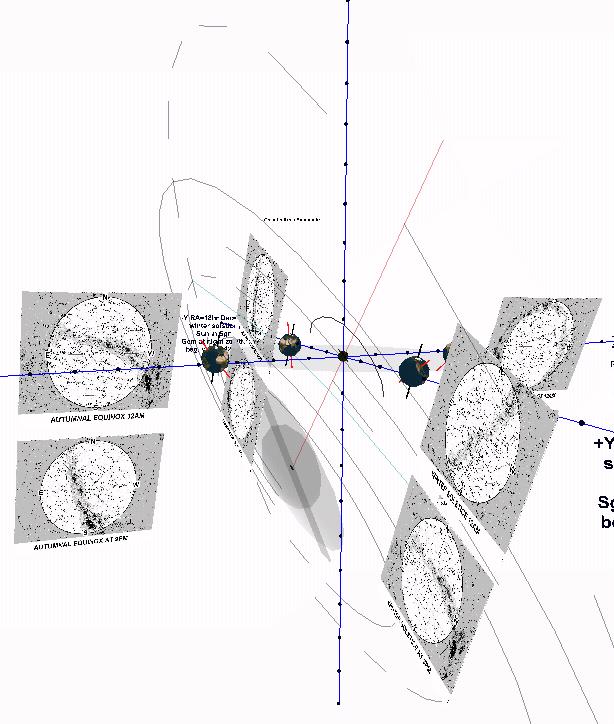 Figure 1 - Ecliptic Plane and Galactic Plane illustrated - 3D Snapshot |
A result of the high inclination of the Earth's orbital plane to the galactic plane is that the Earth's view varies widely throughout the year.
- At the vernal or spring equinox, the Earth is at its highest northern point relative to the galatic plane. The Milky Way's galactic plane is nearly coincident with the observer's horizon. Figure 2. An observer at 40 degrees North latitude looks "up" and "out" the top of the Milky Way's plane through the relatively star-free region of the Coma Bernices.
- Three months later at the summer solstice, the Earth has moved counterclockwise one-quarter of its orbit and the observer at 40 degrees North latitude looks "sideways" towards the Milky Way's galactic core and the rich star and gas regions of the Sagittarius Arm and the constellation Sagittarius, e.g. - the Lagoon Nebula, Messier 8. At midnight on the summer solstice, the plane of the Milky Way appears to run north and south relative to the observer's horizon. Figure 3.
- At the autumnal equinox, the 40 North latitude observer now looks "down" and "out" the Milky Way's plane towards the south galactic pole. Figure 4.
- At midnight on the winter solstice, the observer is again looking "sideways," through rich star fields and gas nebula in the galactic plane to the next galactic arm out - the Perseus Arm. The Orion Nebula, M42, is located in this direction, as is the "unwinding" anti-spinward direction of our local Orion Arm. Figure 5.
The following are 360 degree altitude-azimuth charts of the night sky at 12 midnight and 9pm at the equinoxes and the solstices, generated using Cartes du Ciel:
The orientation of the Earth in its orbit relative to the galactic plane is best understood by taking mental snapshots of the night sky at midnight at the equinoxes and the solstices. However, most amateurs are used to seeing the night sky at 9pm local time. The Earth's daily rotation also effects the apparent orientation of the Milky Way to the observer. In the foregoing figures, the night sky as seen at midnight and 9pm local time are illustrated. Comparing Figures 2-7 and 5-6, there is an evident pattern. The sky at midnight at the spring equinox (Figure 2) looks nearly identical to the sky at 9pm on the summer solstice (Figure 7). Similar pairings are seen for the other equinoxes and solstices. Figures 3 and 8, and 4 and 9.
|
The solar apex - the apparent direction of travel of the Earth within the Milky Way - in the constellation Hercules appears in Figure 3, Summer Solstice at 12AM, and in Figure 8, Autumnal Equinox at 9PM, above. In the spring at midnight, amateurs can look "up" and "out" the "top" of the Milky Way's plane and have a relatively unimpeded view of distant galaxies. Figure 2. At the summer solstice at midnight, rich star fields that are dense with gas clouds and open clusters in the galatic plane towards the galactic core (galactic longitude 0 degrees) are visible. The "spinward" portion of our local Orion-Cygnus galactic arm is visible through 90 degrees galactic longitude. Figure 3. |
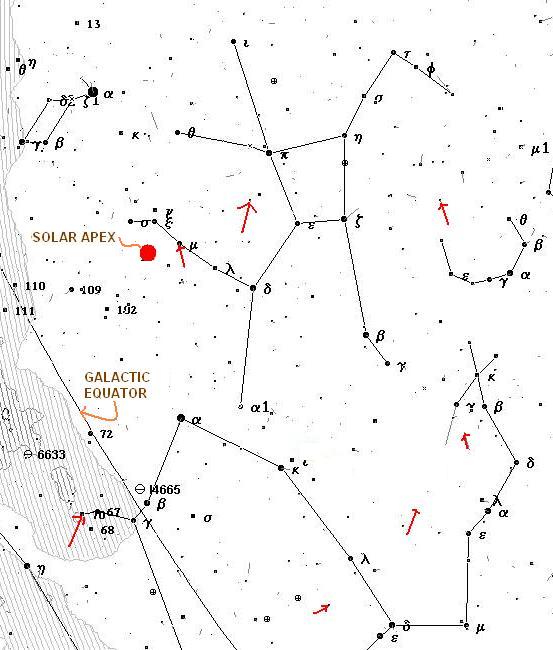 Figure 10 - Proper motion of nearby stars during the last 10,000 years and the solar apex - from Cartes du Ciel |
At the autumnal equinox, the amateur can see portions of the Perseus Arm stretching east to west along the local zenith from Cygnus (90 degrees galactic longitude) to Gemini (~180 degrees galactic longitude). Figure 4. But the observer can also see "down" and "out" the Milky Way's plane towards the south galactic pole - into a relatively star free region and towards distant galaxies in the constellation Fornax. Figure 4. At the winter solstice, the amateur again sees the rich star fields full of open clusters and nebula, like M42 in Orion, all contained in the Milky Way's galactic plane. Figure 5. Near the winter solstice, the northern observer sees from the galactic anti-center near Gemini towards galactic longitude 270 degrees in the constellation Vela. This portion of the sky, near Canis Major, also contains the "unwinding" or "antispinward" portion of our local Orion Cygnus Arm.
The change in apparent orientation of the galactic plane between the equinoxes and solstices is illustrated in the following animations.
- From 41 North Latitude between November and the following spring equinox: The following animation, generated using Carte de Ciel, illustrates how the galactic plane nearly but not exactly aligns with the local observer's horizon as the North Galactic Pole transits near the spring equinox.
- From 27 South Latitude between November and the following spring equinox: The following animation, generated using Carte de Ciel, illustrates how the galactic plane aligns with the local observer's horizon near the spring equinox. Since the galactic north pole is at 27 deg North declination, from this location the North Galactic Pole passes directly through the observer's zenith. At 41 North latitude, Figure 11, the North Galactic Pole is offset from the zenith and the galactic plane never exactly aligns with the observer's horizon. In Figure 12 at 27 South latitude, the galactic plane almost exactly aligns with the local observer's horizon. The same occurs at 27 degs North latitude, but six months later.

Figure 11 - From 41 deg N lat between November and March (1.2 Mb)
In the beginning November orientation of the animation, the bottom one-half of your field of view is relatively empty of dust, gas and stars towards the South Galactic Pole near alpha Sculptor near the bottom or south horizon of the screen. Galaxies in this unobscured region around the South Galactic Pole can be viewed. The Milky Way appears as an east-west running band. This is the Perseus Arm - the next arm out in our spiral galaxy. Amateurs search for intra-galactic objects in that arm of the Milky Way, such as planetary nebula, open clusters, and darka and bright nebula.
As the animation continues to winter, the Milky Way runs north-south across the screen and amateur astronomers focus on intra-galactic objects.
As the animation continues through spring and through June, the Milky Way's galactic plane starts to align with the observer's horizon as the constellation Leo marches in from due East. This leaves the observer's zenith unimpeded by gas, dust and stars in the Milky Way. Amateur astronomers then hunt out distant galaxies around the North Galactic Pole.
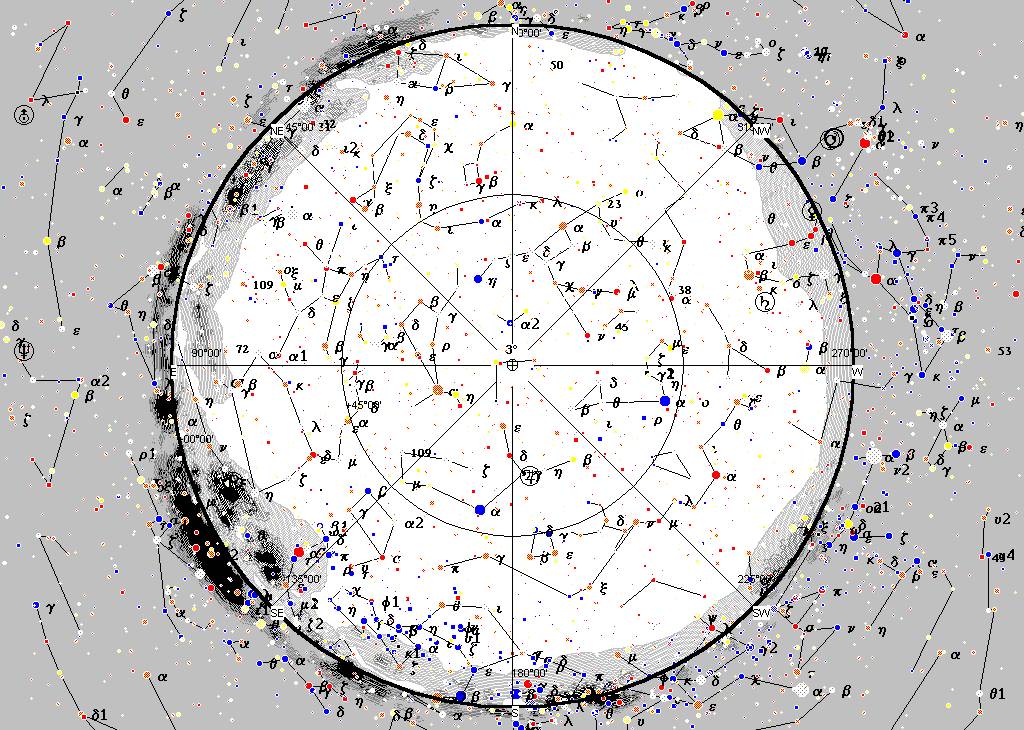
Figure 12 - From 27 deg S lat between November and March (1.2 Mb)
Locations in the United States that have favorable congruent alignments between the galactic plane and the local observer's horizon include:
